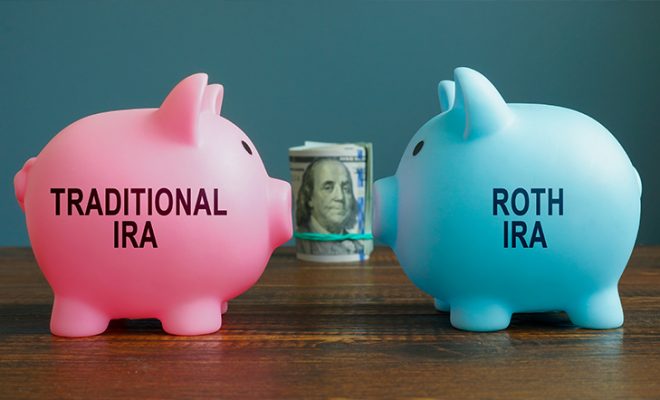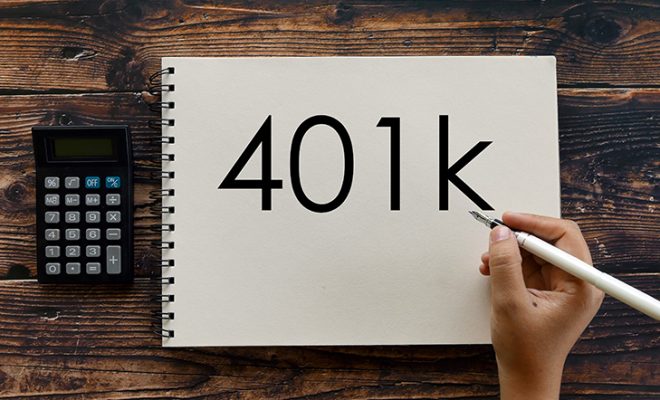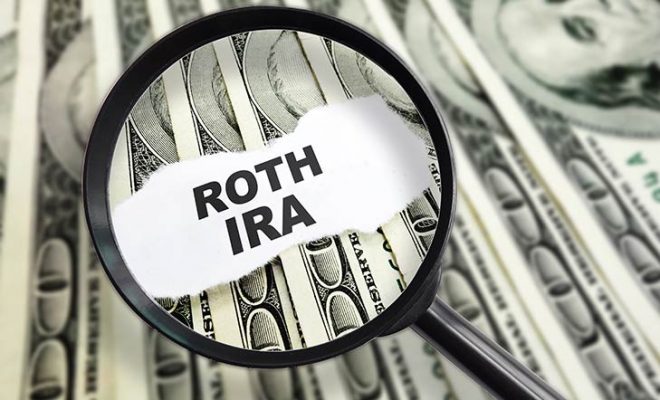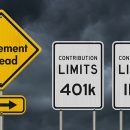How Much Can You Contribute to a 401(k) Retirement Account in 2022?

Retirement planning is a long process. It requires due diligence, time, and effort. It can be confusing at times as there is a lot at stake. A comfortable retirement is everyone’s dream, but not everyone gets the opportunity to turn it into a reality. Sometimes, unexpected financial emergencies come unannounced. Other times, poor planning can be the culprit. No matter the reason, an ill-planned retirement with inadequate savings can be catastrophic to your well-being. This is why it is important to plan for it wisely. This includes starting to save and invest your money from a young age, hiring a financial advisor whenever required to handle your financial affairs and put you on the right path, and taking into account factors like inflation, changing life needs, and more. All of this may sound like a handful to read, but if done conscientiously can help reap the benefits that you may be looking for.
There are several forms of investments that you can consider, such as mutual funds, exchange-traded funds, real estate, gold, stocks, bonds, cash, and more. These can be used for specific goals like buying a house and open-ended goals like retirement. There are also retirement accounts that you get offered along with your job. These are known as 401k retirement accounts and can help you build your retirement corpus with greater ease.
The 401k account is a retirement account in America that has helped many people plan for retirement. This company sponsored retirement plan is a simple financial instrument that can immensely contribute to financial planning. To know more about 401k accounts and how you can best utilize it to maximize your savings for retirement, get in touch with a professional financial advisor. If you are investing in a 401k account or plan to do so in the coming year, you must know the 401k contribution limits. Every year the Internal Revenue Services (IRS) issues contribution limits for retirement accounts like the 401k, according to which investors can contribute to the account yearly. Keep reading to find out more about a 401k and the 401k contribution limits for 2022.
How does a 401k work?
A 401k retirement account is an employer-sponsored retirement plan that employees can use to build their retirement income. This is a tax-advantaged retirement account that allows you to save tax and build your corpus at the same time. There are two types of 401k accounts – traditional 401k and Roth 401k. Here are the differences:
-
- Traditional 401k account: A traditional 401k account allows you to contribute your pre-tax dollars. This means that your contributions are not taxed, and hence, you get to lower your taxable income in the present. However, when you withdraw your money in retirement, you will be taxed as per the income tax slab you fall into then. This can be ideal for you if you expect to be in a lower tax bracket in retirement compared to now.
-
- Roth 401k: A Roth 401k account allows you to contribute your after-tax dollars. This means that your contributions will be taxed now. There will be no tax deduction in your taxable income in the year you make the contribution. However, when you withdraw your money in retirement, your earnings will be tax-free. This is ideal for you if you expect to be in a higher tax bracket in retirement than right now.
Regardless of which of these types you choose, you can build your savings for your golden years in a systematic and steady manner. You can also choose to invest in both these retirement accounts. In this case, your contributions will be split into two accounts up to the permissible limit.
The biggest advantage of a 401k is that your employer matches your contribution. This is a defined contribution plan, so most employers match either the whole contribution or a part of the employee’s salary. This helps you reach your retirement goal sooner and save a larger savings pool for retirement. However, it is important to know that it is not mandatory for employers to match the employee’s contribution. Nevertheless, most companies choose to do so to keep the employees motivated and increase their productivity. Many a time, employers follow a simple formula where they contribute 50 cents for every dollar contributed by the employee. Having said that, there is no standard rule here, so it would be best to discuss the same with your company and plan your contribution accordingly.
Another advantage of investing in a 401k retirement account is that you get to choose where your money is invested. 401k accounts can offer investment options like mutual funds, stocks, bonds, target-date funds, guaranteed investment contracts (GICs), and even stocks of the company where you work. You can select investments based on your financial goals and risk appetite.
What is the maximum 401k contribution limit for 2022?
As stated above, the 401k contribution limits are set by the IRS. These are altered every year to ensure that investors can get the maximum benefits out of their 401 retirement accounts. Adjustments are generally made keeping in mind the rising rate of inflation. The max 401k contribution in 2022 is based on the following limits:
-
- If you are under the age of 50 years, the maximum 401k contribution limit for 2022 is $20,500. In 2021, the contribution limit was $19,500. As you can see, there has been a $1,000 increase.
-
- If you are aged 50 years or older, you can make an additional catch-up contribution of $6,500 in 2022. The limit for catch-up contributions has not been updated in 2022 and remains the same as in 2021. So, contributors aged 50 years or more can make a total contribution up to a maximum of $20,500 + $6,500 = $27,000.
What do you have to be mindful about when contributing to a 401k retirement account in 2022?
Here are a couple of things that are important to keep a note of when contributing to a 401k retirement account in 2022.
-
- Maximum 401k contribution value: There has been a change in the 401k 2022 contribution limit. The IRS limits have increased, so you are now allowed to make a total contribution of $27,000. This translates to an extra contribution of $83 every month for investors. Consequently, you can contribute a total of $2,250 to your 401k account per month.
-
- Handling a 401(k) account with an IRA: An individual retirement account is another retirement plan that is commonly used to build retirement savings. An IRA is not a company-sponsored plan but can be used nevertheless to save for retirement. There are two types of IRAs. The first is a Roth IRA where you contribute your after-tax dollars. Your money grows tax-free, and your withdrawals are not taxed in retirement, as long as you have the account for at least five years and you are 59.5 years or older at the time of withdrawal. The other is a traditional IRA where you contribute your pre-tax dollars and pay tax on your withdrawals in retirement. The total contribution limit for an IRA in 2022 is $6,000. If you are contributing to an IRA as well as a 401k account, the total combined limit for all the accounts in 2022 is $26,500 for investors below the age of 50 years. For investors aged 50 years or more, the total combined limit for all the accounts in 2022 is $34,000. This can be calculated as below:
-
-
- For investors below the age of 50 years: $20,500 (401k) + $6,000 (IRA) = $26,500
- For investors aged 50 years or more: $20,500 (401k) + $6,500 (401k catch up contribution) + $6,000 (IRA) + $1,000 (IRA catch up contribution) = $34,000
-
-
- The 401k contribution limits are set by the IRS and are applied to a calendar year and not the financial year. This means that you will be able to contribute as per the new limits from January 1, 2022, and not April 1, 2022. Similarly, these limits will be applicable till December 31, 2022, and not March 31, 2023.
-
- You must reach the maximum 401k contribution limit by the end of the calendar year. This implies that the last contribution for 2021 can be made on December 31, 2021. After this, the new 401k contribution limits will be set in.
- If you contribute more than the maximum 401k contribution limit set by the IRS for a year, you can be taxed doubly on the extra contribution. This is a common error. So, if you happen to do the same, it may be advised to contact your plan administration at the earliest.
Should you max out your 401k contribution limits?
This is an individual choice that needs to be made after careful assessment and evaluation of your present wealth, income, and future goals. Sometimes it can benefit you to increase your contribution as you can be more assured of your retirement safety. However, increasing your contribution can also have some disadvantages. It may be advised to consult a professional financial advisor for this, as the choice can be harder than it seems. However, the following considerations can help you get a better idea of the consequences of meeting the maximum 401k contribution limit.
Benefits of maximizing your 401k contributions
-
- It reduces your taxable income: If you have a traditional 401k account, you can lower your taxable income for the year considerably by contributing to the maximum. Traditional 401k accounts are fueled with your pre-tax dollars. So, the more you contribute, the more tax you can save in the present. This can be even more beneficial for those over the age of 50 years as they can contribute an extra $1,000 to their 401ks.
- You get a higher employer match: If your company is matching your contribution, a higher contribution from your end also increases your employer’s match. This helps you save more and reach your retirement goal sooner than anticipated. Even if your employer is meeting half your contribution or a certain percentage of it, maximizing your share will automatically increase the company’s share too.
Cons of maximizing your 401 contributions
-
- Neglected goals: You may end up neglecting your other financial goals by concentrating all of your income on your 401k. This can make it harder to sustain your present lifestyle and affect your family members too. For example, your children may not have the funding required for higher education, you fall behind schedule in buying a home, etc.
- Higher tax bracket: If you choose a traditional 401k and increase your retirement corpus, you may fall into a higher tax bracket in retirement. The higher the income in the future, the higher would be the tax rate applied to it. Similarly, if you are investing in a Roth 401k, you may have a higher taxable income in the present.
When should you maximize your 401 contributions limits?
Here are some scenarios where maximizing your 401k contribution limits can work in your favor:
-
- You have other investments as well: Focusing all your income in one retirement account may not be ideal. However, if you have a good balance of other investments and savings accounts like an IRA, mutual funds, stocks, real estate, gold, as well as insurance like health, life, homeowners insurance, etc., a health savings account, and more, you can maximize your 401 account contributions without worrying.
- You have a stable income and are financially sound: If you are struggling to make ends meet, maximizing your 401 contributions will only put more pressure on you. This can force you to live an extremely frugal lifestyle and cause financial anxiety. So, it may be advised to first ensure that you are financially sound and then aim to contribute fully to your 401k plan.
- You have paid all your debt: Debt can erode your savings, so making it a priority can help you with your long-term financial planning. If you do have some extra income, it may be beneficial to use it to pay off your debt, particularly the high interest loans and credit cards. After you have settled your debt liabilities, you can then divert the excess funds towards your retirement.
- You have enough emergency money: The year 2022 may seem like a window to better times, but it is hard to ignore the turbulence of 2020 and 2021. So, while you plan for your future, keeping the present in mind may be essential. Having an emergency fund is more important now than it ever was. If you have an emergency fund equivalent to at least 6 to 12 months of your salary, you may consider maximizing your 401k contribution limits.
When should you not maximize your 401 contributions limits?
Here are some scenarios where maximizing your 401k contribution limits may not be ideal:
-
- You do not have a stable income: If you are in between jobs all the time and do not have enough income or savings to sustain your current lifestyle or near future expenses, it may not be advised to maximize your contributions for a 401k plan.
- You do not have other investments: It is important to understand that retirement planning is only a part of your financial plan. A comprehensive financial plan also includes education planning, home planning, estate planning, tax planning, and more. Similarly, you could have several goals with a shorter horizon than retirement, such as buying a home, traveling, buying a car, sending your children to college, and more. For this, you may need to invest in stocks, bonds, real estate, 529 education savings accounts, etc. You would also need insurance and a plan for your retirement health expenses too. All of this requires attention and commitment. If you do not have these things figured, it may be helpful to concentrate on them with the same amount of detail as you do with retirement.
- You do not have an emergency fund: As explained above, with a fluctuating market, job losses, and salary cuts in the recent past, an emergency fund is a vital financial tool to have in 2022. So, it may be advised to focus on it first. Once you have a solid emergency fund that can last you at least 6 to 8 months comfortably, you may focus the rest of your income towards your 401k savings. If you do not have enough emergency funds, maximizing your 401k contributions may not be the best thing to do.
- Your 401k has a high fee: 401ks have administrative fees that can impact your profits. These can differ according to the plan administrator. If your plan comes with a high fee, maximizing your contributions can further increase the fee. In such a case, it may be more beneficial to divert your excess funds towards another account that may have lower fees or charges. It is important to look at the overall gains and losses you incur when investing your money in a particular vehicle. Only then can you ascertain your real profits and make an informed decision.
How much should I have in my 401k?
There is no straight figure that you can aim for as everyone’s requirements will differ greatly. What is suitable to you may not be suitable for the next person and vice versa. So, instead of aiming at a standard figure, you may benefit more if you take into consideration your individual goals and needs. You may also aim for the following percentages based on your age:
- Between the ages of 20 and 29, contributing at least 8% of your income towards your 401k can be a good start.
- Between the ages of 30 and 49, contributing at least 9% of your income can help you save a good amount.
- Between the ages of 50 and 60, contributing at least 10% of your income can be a good number to aim for.
- Between the ages of 61 and 70, contributing at least 11% of your income can be deemed as good.
- Between the ages of 71 and 80, contributing at least 12% of your income can be good.
This can turn into different balances for different people, depending on their income. But it can serve as a general approach to retirement planning. You can also use a 401k Retirement Account Calculator to calculate your 401k needs.
To conclude
It helps to always stay up to date with the changes in the 401k contribution limits. This way, you can make the most of the increased limit and contribute accordingly. Not only does this help with saving more, but it also allows you to save tax. However, before you maximize your contributions, try to analyze their impact on your overall finances and see if it benefits you or puts you at a disadvantage. Accordingly, you can make a suitable decision. If you are unsure of what to do, you can always consult a professional financial advisor near you.
To get in touch with a fiduciary advisor who may help you understand the benefits of a 401k account and the changes in 2022 contribution limits, use the free advisor match service. Based on your requirements, the platform scans through registered and qualified advisors to match you with an advisor suited to your needs and goals.
To learn more about retirement accounts that might be best suited for your unique financial requirements, visit Dash Investments or email me directly at dash@dashinvestments.com.
About Dash Investments
Dash Investments is privately owned by Jonathan Dash and is an independent investment advisory firm, managing private client accounts for individuals and families across America. As a Registered Investment Advisor (RIA) firm with the SEC, they are fiduciaries who put clients’ interests ahead of everything else.
Dash Investments offers a full range of investment advisory and financial services, which are tailored to each client’s unique needs providing institutional-caliber money management services that are based upon a solid, proven research approach. In addition, each client receives comprehensive financial planning to ensure they are moving toward their financial goals.
CEO & Chief Investment Officer Jonathan Dash has been profiled by The Wall Street Journal, Barron’s, and CNBC as a leader in the investment industry with a track record of creating value for his firm’s clients.










